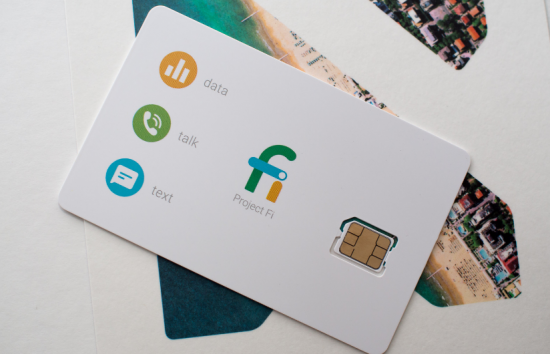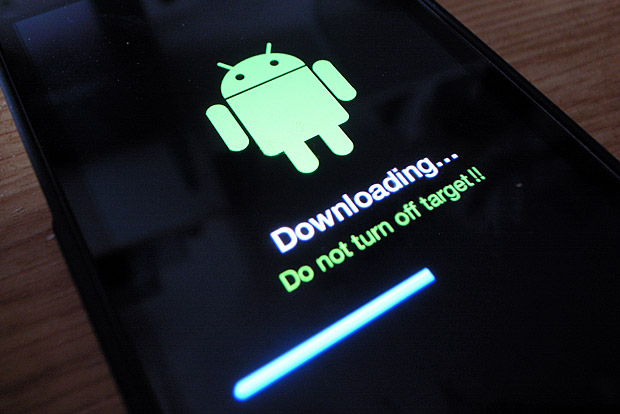For a little ove r a year now, I have been using Project Fi as my cell carrier, and I can say that for the most part I’m happy. For those unfamiliar, Project Fi is a mobile virtual network operator (MVNO) owned and operated by Google. Launched in early 2015, Google had the idea of doing a different kind of MVNO. While most of these providers merely resell one wireless network with a slightly different (see cheaper) rate structure, Google decided to resell two networks, allowing Fi users to use both T-Mobile and Sprint. This allowed a completely different kind of experience than other MVNOs, as Fi’s users usually get the strongest connection available from two networks. While neither is quite as arguably strong as AT&T or Verizon (networks I am more used to), my experience has been rather positive.
r a year now, I have been using Project Fi as my cell carrier, and I can say that for the most part I’m happy. For those unfamiliar, Project Fi is a mobile virtual network operator (MVNO) owned and operated by Google. Launched in early 2015, Google had the idea of doing a different kind of MVNO. While most of these providers merely resell one wireless network with a slightly different (see cheaper) rate structure, Google decided to resell two networks, allowing Fi users to use both T-Mobile and Sprint. This allowed a completely different kind of experience than other MVNOs, as Fi’s users usually get the strongest connection available from two networks. While neither is quite as arguably strong as AT&T or Verizon (networks I am more used to), my experience has been rather positive.
Let’s start with the rate structure: $20/month gets the user unlimited talk and text in the US. Data runs $10 per GB and you can choose how much you will use each month. There are no data tiers. While it seems a little steep, this is great for users who don’t use much mobile data. I set my account for 3GB/month, so if I use over 3GB, I am charged for the extra amount I used. For instance, if I use 3.5GB, I am only charged an additional $5. There are no overage fees. If I don’t use my 3GB, Fi credits me the amount I didn’t use. So if I only used 2.5GB, Fi credits me $5. Also, all Fi devices are programmed to automatically jump on any Google vetted open WiFi hotspots and automatically encrypt the connection. Between this and my home WiFi, I usually find my usage to be under 3GB of mobile data each month, even though total data usage on my device is closer to 7-10GB/month. Basically, the data plan works surprisingly well.
Ready to sign up? Well, there’s a catch, the supported device list is rather small. iPhones are a no go at the moment, as are most Android and all Windows phones. Project Fi only supports the Nexus 6, 5X, 6P, Pixel and Pixel XL. I think it has something to do with the intelligent network switching. As its core, T-Mobile runs mostly on a GSM network, while Sprint is still on CDMA. Most smartphones can only talk to one network type. My Nexus 6P talks to both and switches between them as needed. Though if I leave Fi, I could easily move my number to either Verizon or AT&T. I’m not an expert, but I think LTE is rendering this distinction moot going forward. This point is slowly becoming a deal breaker for me. I don’t have much interest in the Pixel phones, so I have no upgrade path from the 6P…
One other item to mention here is the international service, which is an excellent deal on Fi. There is no activation or monthly subscription fee, your phone simply works in one of the 135+ countries Fi supports. Charges are usually around $.20/min for calls, unlimited texts included and most countries have 4G data speeds for the same $10/GB as the US based plans.
of the 135+ countries Fi supports. Charges are usually around $.20/min for calls, unlimited texts included and most countries have 4G data speeds for the same $10/GB as the US based plans.
Now that I am done with the sales pitch, here’s the bottom line. Overall as a cell carrier, Project Fi works great. In comparison to Verizon’s service, here in NYC, Fi’s service is as good, if not better. I’ve had a similar experience in many other cities I’ve visited in the US. Account management through their web interface is equally great. The site is simple to navigate, starting with a clean overview and allowing me to break into account details, such as how much data I used on a daily basis and a list of all my calls and texts. In contrast, the AT&T wireless account management page is a bloody nightmare (I still help Mom and Dad with their account) from my experience. Internationally, FI has also been excellent. This year I traveled to Canada, Curacao and Dominican Republic. I had little to no issues in those countries, and I used GPS heavily while driving the often empty roads of Curacao. Others haven’t had as much luck. Tom Merritt, host of the Daily Tech News Show, spoke about his experience using Fi in Asia, which wasn’t great for him.
Should you get Fi? It’s a difficult question. The service has been damn good and the pricing works for me. If you’re a smartphone junkie who changes devices regularly, Fi probably isn’t for you. With expanded device support, I could see Fi being a serious competitor to the other big carriers. As it is now, I might be off to AT&T with a newer Android device within the next six months unless something changes.








